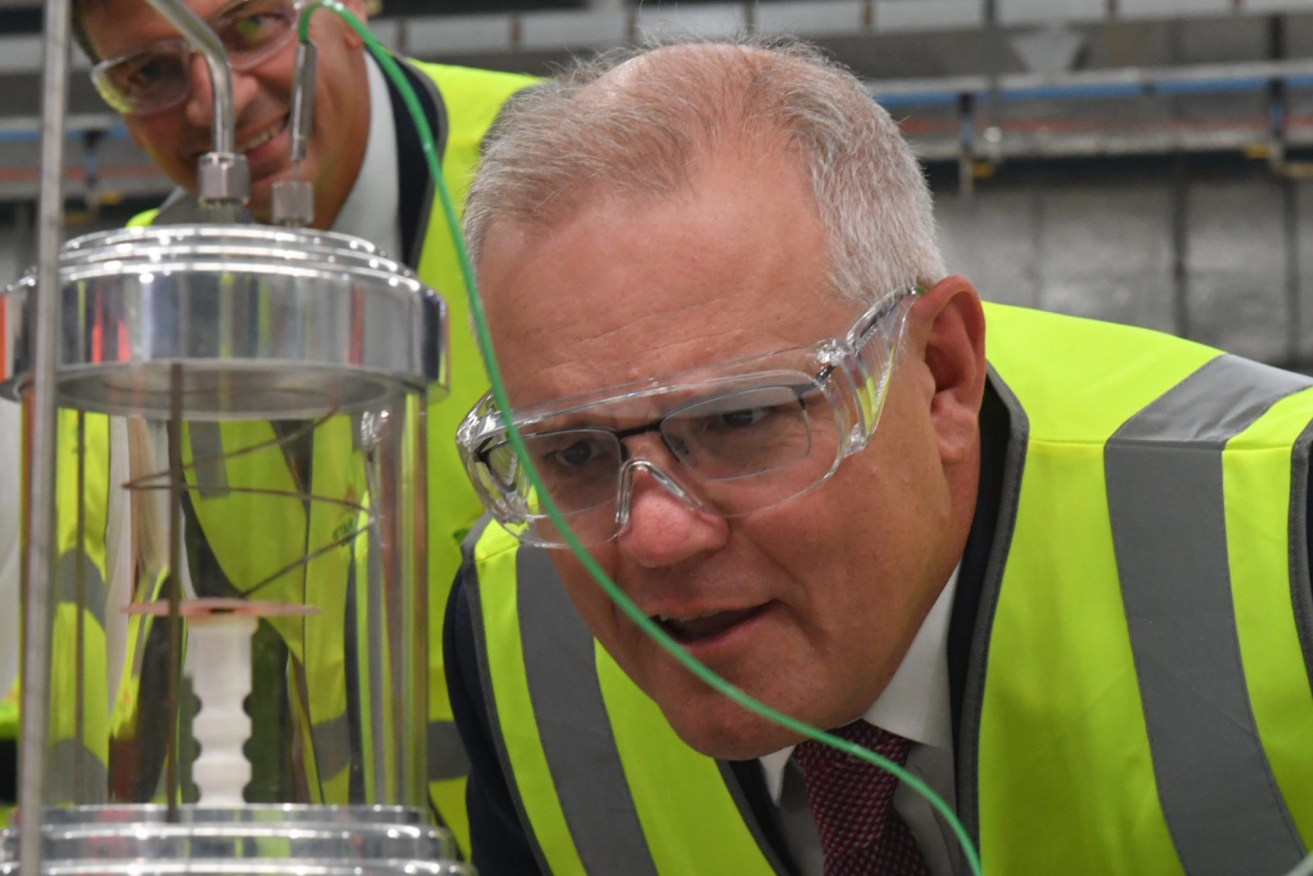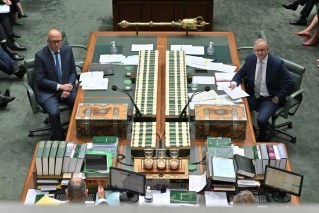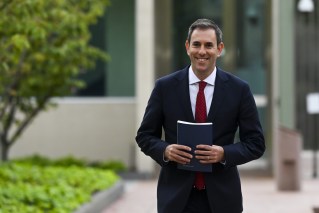Why Morrison is suddenly so excited about the prospect of catching sunshine in a bottle
When Jonathan Swift wrote Gulliver’s Travels 300 years ago, he found humour in a man trying to extract sunbeams from cucumbers. The Australian Renewable Energy Agency’s latest annual report is a deadly serious version of the same thing, writes Robert MacDonald


Confidence in Prime Minister Scott Morrison and his government has shrunk to record low levels. (AAP Image/Mick Tsikas)
What do Gulliver’s Travels and the recently released 2020-21 annual report of the Australian Renewable Energy Agency (ARENA) have in common?
Jonathan Swift wrote Gulliver’s Travel 300 years ago, not long before the start of the Industrial Revolution, which unleashed the genie of coal-fired power.
ARENA is one of the main government agencies leading the Australian Government’s technology-driven effort to put that genie back into the lamp.
Here’s the connection.
Gulliver meets a man on his travels (chapter five) who says he’s working on a project to extract sunbeams from cucumbers, which will then be sealed in jars and used as heating in inclement weather.
He’s been working on his scheme for eight years and is sure that within another eight years, he’ll be able to deliver his bottled sunshine at a reasonable rate.
He asks Gulliver “to give him something as an encouragement to ingenuity”. He also notes it’s been a “very dear season for cucumbers”.
Gulliver gives the man “a small present” before heading on his way.
ARENA’s purpose “is to support the global transition to net zero emissions by accelerating the pace of pre-commercial innovation, to the benefit of Australian consumers, businesses and workers”.
It does this by handing out grants – $1.81 billion to 612 renewable energy projects since the Gillard Government created it in 2012, a little over eight years ago.
Projects in Queensland have received $310 million of the total.
And what’s the return to date?
Plenty of sunshine in bottles – or at least, improved prospects thereof – according to ARENA’s latest annual report, which, in the nature of all government agency annual reports, highlights successful case studies and aggregates numbers in a way that hides any particular failings.
It tells us that all of the 27 ARENA-funded projects completed during the year, “achieved an advance in Technology Readiness Level or Commercial Readiness Index indicators over the life of the project’.
That’s to say 100 per cent of the projects moved that much closer to reality, compared with a target for the year of 80 per cent.
More broadly, according to the report:
“Since ARENA was established in 2012, we have played an instrumental role in delivering significant improvements in the competitiveness of renewable energy technologies such as large-scale solar, grid-scale batteries, bioenergy, distributed energy and hydrogen.”
Well, at these prices – $1.8 billion to date and another $1.4 billion for the next 10 years – you’d hope so.
But the big question is how much of this activity would have occurred anyway, in the absence of a massive pool of government money?
The Australian National Audit Office published a review of ARENA last year and arrived at this conclusion:
“While ARENA’s grant program management is largely effective, its evaluation and performance reporting frameworks do not clearly demonstrate that its grant funding is increasing the supply and competitiveness of renewable energy in Australia beyond what would otherwise have occurred.”
In other words, ARENA has shown itself to be good at handing out money but not so good at measuring whether all this publicly funded largesse was necessary.
ARENA says it has taken the ANAO’s findings on board and provides a couple of case studies in its annual report, which it says shows how its support has helped manage renewable energy on the electricity grid more effectively.
This isn’t to argue against public investment in the research and development needed to replace high-density carbon energy sources with less-efficient and as yet less-reliable renewable power sources.
But the eternal problem with massive grants schemes such as ARENA’s is that both politicians and recipients end up regarding them as essential, regardless of whether they’re actually delivering taxpayers value for money.
When Tony Abbott became prime minister in 2013, he tried unsuccessfully to kill off ARENA and the Gillard Government’s other renewable energy funding agency, the Clean Energy Finance Corporation.
Since then, the Coalition, despite various past efforts to trim funding, has learned to love ARENA, so much so it is now a central plank in Scott Morrison’s “Australian Way” plan to net zero carbon emissions.
It’s the perfect shield for a government fending off claims that its heart just isn’t in the push to decarbonise the Australian economy.
“Just look at how much money we’re spending. How could we not be committed?”
Now that the Morrison Government has committed itself to continuing this publicly funded model for getting Australia to a net zero carbon future, the oversight and assessments of ARENA’s spending will be more necessary than ever.
None of the 612 ARENA-funded projects to date has, as far as I know, specifically involved cucumbers.
But there have been various so-far unsuccessful attempts to turn bagasse, 40 different types of algae and sewage treatment plant waste into usable energy sources.
But don’t look to Gulliver’s Travels for the secret to success. Swift doesn’t record whether the cucumber man ever did get that sunshine into a bottle.
The arrival of the Industrial Revolution and the harnessing of coal as a reliable energy source must have beaten him to the punch.








